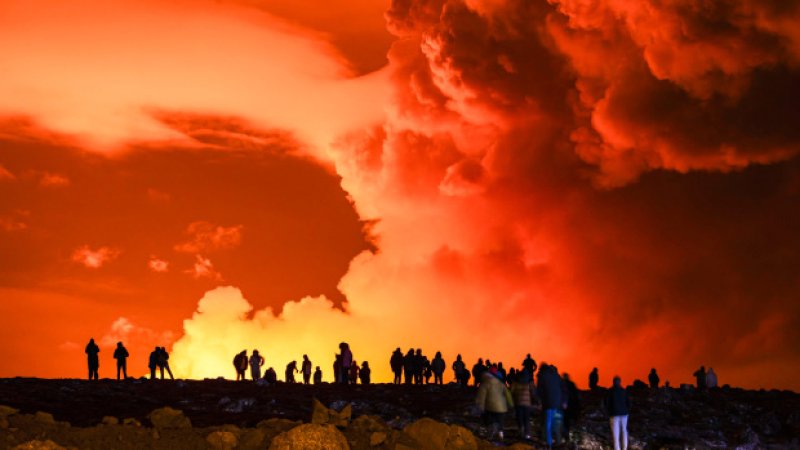
Iceland volcano erupts after Blue Lagoon evacuated

Iceland's Meteorological Office said the eruption started around 09.45 local time (10:45 BST) just north of the small town of Grindavík. Less than an hour later, the crack that had opened in the ground was 700m (2296ft) wide and continuing to grow.
The eruption occurred after earthquakes had hit the area known as the Sundhnúk crater range around 06:30 local time.
Grindavík and the Blue Lagoon had already been ordered to evacuate ahead of the eruption. Roads in and out of the town remain closed, but flights are currently not affected.
The Blue Lagoon would be closed through Tuesday, the spa said on its website.
As of 11:20 local time, Iceland's Meteorological Office (IMO) said the original fissure had extended southward and a new crack had opened.
Officials urged any people remaining in Grindavík to leave. Earlier on Tuesday, several individuals had refused to follow the evacuation order, Icelandic media reported.
The region's police chief, Úlfar Lúðvíksson, told local media that only around 40 houses had been occupied by residents, following previous volcanic activity.
Most of the 4,000 residents of Grindavík were permanently evacuated in November 2023, prior to eruptions in December 2023 and January, February and March 2024.
The length of the magma that formed on Tuesday under the crater series is about 11 km (6.8 miles) - the longest that has been measured since 11 November 2023, the IMO said.
Based on current wind direction, gas pollution from the eruption will travel northeast towards the capital area, the IMO added.


